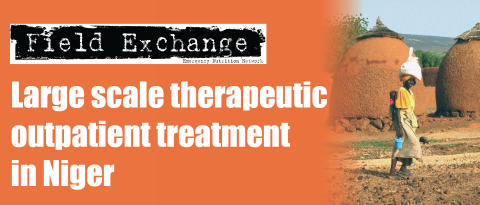USAID in public-private alliance initiative
Summary of published research1

A malnourished child helps herself to locally produed RUTF in Malawi
The United States Agency for International Development (USAID) established the publicprivate alliance initiative - the Global Development Alliance (GDA) - approximately four years ago. The initiative reflected the fact that over the past 30 years, resource flows from the United States (US) to the developing world had shifted from being predominantly government- led, to a situation where now 85% of resources come from fixed capital investment, remittances and various forms of private funding. According to a recent article in OECD Observer, there are many examples of how the GDA has successfully forged partnerships between the public and private sector.
Under the GDA in Malawi, a non-governmental organisation (NGO) called Project Peanut Butter (PPB) teamed up with Nutriset to establish a production facility for Ready to Use Therapeutic Food (RUTF). Nutriset donated financing and shared its intellectual property, i.e. the recipe. USAID gave $130,000 to PPB to finance the production facility and training of Malawian staff. PPB and Nutriset provided cumulative funding and in-kind resources worth $450,000. Nutriset did not make a profit. The production facility uses local raw materials and will soon have its capacity expanded. Other examples of successful partnership cited in the article include work with the Dutch company 'Royal Ahold', which is one of the largest buyers of food in the world. As well as bringing its knowledge of agricultural quality to the table, Royal Ahold co-funds projects with NGOs on the ground in Ghana. The company has found opportunities to encourage new businesses, such as cosmetic product lines from shea butter. USAID has contributed more than $2 million to the alliance, which Royal Ahold has more than matched through cash contributions and technical expertise.
There is also the Sustainable Forest Products Global Alliance with the Swedish firm Ikea, Home Depot and other large buyers of forest products to which USAID has contributed over $7.5 million since 2002. Alliance partners have more than matched this amount to the tune of over $27.5 million in funding.

Mothers feeding their children local RUTF, produced through Project Peanut Butter
GDA is, however, not the only government agency building alliances. In recent years, other OECD countries have also become involved, e.g. GTZ, DFID and CIDA. In spite of the many successes, the article highlights the fact that there are important lessons to learn from this way of working.
First, grant mechanisms rather than budget support work best. Typically, USAID and private partners fund the implementing organisation, usually NGOs. Second, partnerships can boost aid effectiveness in some sectors. In agriculture, productivity appears to have been enhanced by bringing market disciplines and expertise about cultivation and quality standards to bear.
There are also lessons of warning. Partners share risk but do not make that risk disappear. Good projects have been known to come unstuck late in the process because of sudden shortage of business funds. Also, there are lobbies against partnerships seeing them as efforts to standardise global markets thereby creating losers, e.g. local farmers that do not make the cut. Partners, therefore, need to think about how farmers who do not meet productivity requirements in particular markets can diversify into other agribusinesses, such as food processing and packaging, or even switch to other areas such as tourism.
1Runde. D (2006). How to make development partnerships work. OECD Observer, No 255, May 2006, pp 35-37
Imported from FEX website


